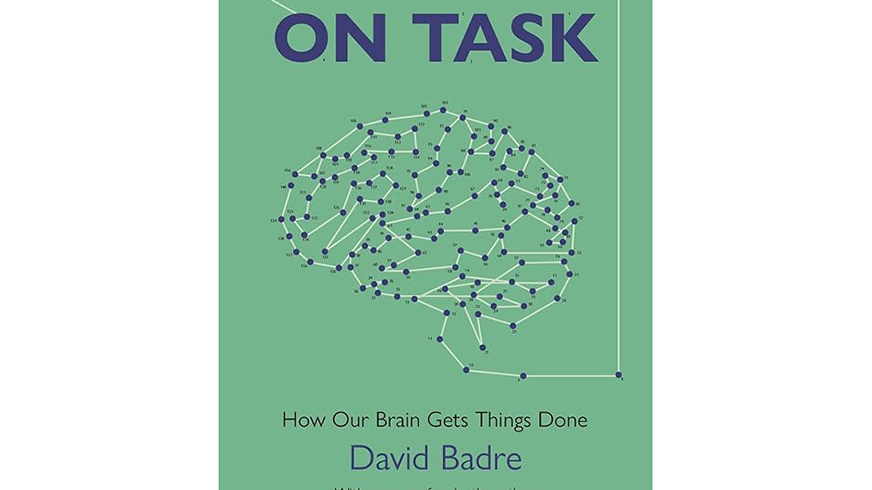Education is intended to be a great equalizer, one that provides everyone with the resources that they need to be successful. Unfortunately, there’s plenty of evidence suggesting that it might not be as equalizing as many would like. There are still academic achievement gaps, for example between men and women and between European Americans and African Americans1,2. These performance gaps can’t be entirely explained by differences in background experience. Instead, the stereotypes that students have internalized likely play a significant role.
One pivotal study by Steven Spencer, Claude Steele, and Diane Quinn10, for example, found that simply telling women that men do better on a particular math test results in worse performance, a phenomenon referred to as “stereotype threat”. Another study found that just telling a black athlete that a golf task was a test of “sports intelligence” significantly decreased his performance11. Countless studies since have replicated these findings for everything from working memory capacity to test anxiety to high blood pressure. When people expect that they should have some flaw or difficulty, the expectation becomes a self-fulfilling prophecy.
Studies have also found that teacher expectations can have a significant impact on student performance. For example, a series of influential studies from the 1960’s showed that after teachers were told that randomly selected students were about to experience an “intellectual boom,” those students experienced major improvements in their performance, even though nothing had changed aside from their teacher’s opinion of them12. Subtle features of the environment can shape students’ behavior and self-perception, so it’s essential that we identify ways to minimize stereotype threat in the classroom.
The Power of Values Affirmation
Combating deep-rooted stereotypes is no light task, but research has shown that there are subtle interventions that may at least begin to do this. They’re often called values affirmation interventions because they encourage students to reflect on their personal values. The most common implementation of values affirmation involves writing about one’s values, but the crucial ingredient is that students are conscious of the things that are important to them personally. In one study, half of the males and half of the females in a college physics class participated in a values affirmation activity at the beginning of the semester, while the others did not1. By the end of the semester, there was a marked difference in the two groups. In the control group (students who did no special intervention), males significantly outperformed females. In the affirmation group, however, this gap was eliminated. This suggests that simply being mindful of one’s values can combat stereotypes that may otherwise hamper girls’ performance.
A similar study examined the effects of a values affirmation intervention in African Americans and European Americans2. This study looked at change in GPA over the course of two school years. While the intervention didn’t affect European Americans — there was no difference in GPA change in the affirmation group compared to the group who did not do the affirmation — the GPAs of the African Americans who participated in the intervention increased by .24 points by the end of the two years.
The intervention was especially effective for low-performing African Americans, who experienced a GPA increase of 0.41 points on average and whose chances of repeating a grade or being placed in a remedial class were slashed from 18% to 5%.
Why do these value-affirming interventions work?
They are incredibly simple, involving only a short writing activity that is sometimes repeated a few times, but sometimes only done once. Yet the simplicity might be a key to the success of values affirmation interventions. The authors of the study investigating their effects for African Americans point out that there is often a recursive process at work: students have initial mental states or stereotypes that are compounded over time. The intervention, though small, seems to alter that recursive trajectory, leading to substantial long-term consequences2.
Values Affirmation & the Brain
Work by Lisa Legault and colleagues suggests that effects of self affirmation can be seen at the neural level3. The brain’s electrical patterns can be recorded through electroencephalography (EEG), and different cognitive processes have different signature patterns. One well-known pattern is called the Error-Related Negativity (ERN). Just 100ms after people make an error on a task, there is a negative electrical spike, as their dopaminergic neurons (those that encourage us to keep doing more of what we’re doing) stop firing. They hypothesized that when we feel affirmed, we are more sensitive to our errors (in order to learn from them), and therefore that people who had undergone a self-affirmation measure should show an increased ERN response to making errors and an improved performance on a task. On the flip side, people whose self-affirmation was undermined might show a blunted ERN response and a decreased task performance.
All participants received a list of 6 values and rated them in terms of their importance to themselves. Those in the affirmation condition then wrote about their top value, while those in the non-affirmation condition wrote about their lowest one. They then performed a straightforward task: when they saw an M on the screen, they had to quickly press a response button; when they saw a W on the screen, they were to do nothing. This type of task is often called a go/no-go task. They did indeed find that participants who completed the values affirmation task had both increased performance and “neuroaffective sensitivity to task errors” compared to those in the non-affirmation group.
This research adds to our understanding of why values affirmation improves performance in groups facing stereotype threats. It seems to reduce depletion by improving our detection of and sensitivity to errors, reduce defensiveness, and motivate people to succeed.
A values affirmation intervention has also been effective for attaining weight loss goals4, demonstrating that the mechanism through which it works affects motivation and empowerment beyond the classroom. Another research group investigated neural activity while people were exposed to messages about ways to improve their health by using functional magnetic resonance imaging (fMRI)5. Participants who had completed a values affirmation exercise before hearing the mentions showed more activity in the ventromedial prefrontal cortex (a region of the brain associated with self-related processing and positive valuation) than those who did not reflect on their values before receiving the same message.
Together, these studies suggest that after reflecting on our values, our brains may process incoming information differently, allowing us to make the best of constructive feedback and motivating us to improve our performance the task or goal we’re focused on.
Facebook as an Unexpected Tool for Self-Affirmation
Are there other ways to tap into the benefits of self affirmation? Recent work suggests that Facebook may provide one way of doing so6. College undergraduates were placed in one of four groups: (1) the Facebook self-affirming group had 5 minutes to explore any aspect of their own Facebook profile they chose; (2) the Facebook non-affirming group had 5 minutes to explore someone else’s profile; (3) the values affirmation group wrote for five minutes about something they valued; and (4) the values control group wrote about something they valued very little. After doing the associated task, participants received feedback on a speech they had done at the very beginning of the experiment. Everyone received the same generic negative feedback, and they were then asked to rate different aspects of that feedback, like how useful it was and how competent the person who gave it to them was. If participants were self-affirmed before receiving their feedback, they should be more accepting of the negative feedback they received. This was exactly what the researchers found, regardless of whether the affirmation came in the form of the traditional writing intervention or by looking at their own Facebook profile. In fact, both forms of affirmation were equally effective. This study still leaves the mechanistic question unanswered; that is, why does viewing our own profile encourage us to reflect on our values? Is it only important that we focus our thoughts on ourselves, or is there something about a Facebook profile that reminds us of what we believe in and value?
In a second experiment, these same researchers asked whether people actually seek out Facebook’s self-affirming abilities after a negative experience. Again, they performed a speech and received generic feedback. This time, half of the participants received negative feedback, while the other half received neutral feedback. They were then invited to take place in a second experiment online and could choose which experiment they wanted to take place in: one that involved Facebook, YouTube, music, news, or games online. Those who received the negative feedback chose to go to Facebook significantly more often than those who received the neutral feedback, suggesting that Facebook is one outlet that people seek out to affirm themselves after an injury to their ego.
While students can certainly use Facebook to engage in many activities that are not affirming (some of which may in fact be the disaffirming), current research suggests that we may not want to dismiss the platform as solely a hindrance to education. Instead, we may want to entertain the counterintuitive possibility that it may be affirming for students, especially when looking at their own profiles.
Incorporating Affirmation in Education
Fortunately, values affirmation activities take little time and no money to implement. They help those who are most likely to be battling stereotypes without hurting others. So far, they seem to be a win-win. But there are still lots of aspects of affirming interventions that need to be better understood. Is an intervention as effective if students are aware of its intentions as if they are unaware? Is more affirmation always better? What other ways can it be implemented – perhaps by looking at photos, listening to music with positive messages, or engaging in an activity that one is good at?
Until more of these questions are addressed, teachers who want to reduce the role of harmful stereotypes in their classrooms can consider one of the forms of affirmation that we know to be beneficial. Whether students are affirmed through Facebook, writing about values, or other unknown sources, keeping the power of self-affirmation in mind may help us bring education closer to the great equalizer it was intended to be.
References & Further Reading
- Miyake, A., Kost-Smith, L.E., Finkelstein, N.D., Pollock, S.J, Cohen, G.L, & Ito, T.A. (2010). Reducing the gender achievement gap in college science: A classroom study of values affirmation, Science, doi: 10.1126/science.1195996. [Paper]
- Cohen, G.L., Garcia, J., Purdie-Vaughns, V., Apfel, N., & Brzustoski, P. (2009). Recursive processes in self-affirmation: Intervening to close the minority achievement gap. Science, doi: 10.1126/science.1170769. [Paper]
- Legault, L., Al-Khindi, T., & Inzlicht, M. (2012). Preserving integrity in the face of performance threat: Self-affirmation enhances neurophysiological responsiveness to errors. Psychological Science, doi: 1177/0956797612448483. [Paper]
- Logel, C. & Cohen. G.L. (2011). The role of the self in physical health: Testing the effect of a values-affirmation intervention on weight loss. Psychological Science, doi: 10.1177/0956797611421936. [Paper]
- Falk, E.B., Brook O’Donnell, M., Cascio, C.N., Tinney, F., Kang, Y., Lieberman, M.D., Taylor, S.E., An, L., Resnicow, K., & Strecher, V.J. (2014). Self-affirmation alters the brain’s response to health messages and subsequent behavior change. Proceedings of the National Academy of Sciences, doi:10.1073/pnas.1500247112. [Paper]
- Toma, C.L. & Hancock, J.T. (2013). Self-affirmation underlies Facebook use. Personality and Social Psychology Bulletin, doi: 10.1177/0146167212474694. [Paper]
- Gonzales, A.L. & Hancock, J.T. (2010). Mirror, mirror on my Facebook wall: Effects of exposure to Facebook on self-esteem. Cyberpsychology, Behavior, and Social Networking, doi: 10.1089/cyber.2009.0411. [Paper]
- The Value of “Values Affirmation”: Stanford Graduate School of Business [Article]
- Pedersen, T. (2013). Facebook profile often used for self-affirmation. Psych Central. [Article]
- Spencer, S.J., Steele, C.M., Quinn, D.M. (1999). Stereotype threat and women’s math performance. Journal of Experimental Psychology, 35, 4-28. [Paper]
- Stone, J., Lynch, C.I., Sjomelin, M., Darley, J.M. (1999). Stereotype threat effects on black and white athletic performance. Journal of Personality and Psychology, 77(6), 1213-1227. [Paper]
- Rosenthal, R. & Jacobson, L. (1966). Teachers’ expectancies: Determinants of pupils’ IQ gains. Psychological Reports, 19, 115-118. [Paper]





